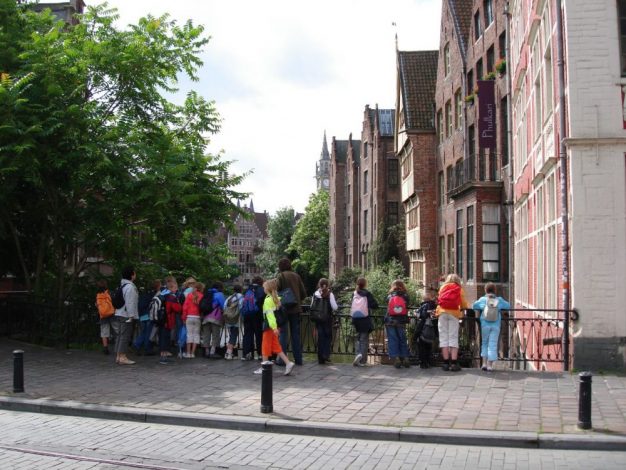
Room for Ghent: planning the spatial future of an historic city
The host city for Child in the City 2016 has embraced the diverse challenges of planning its spatial future by drawing upon the ‘situational expertise’ of its most important stakeholders – the citizens themselves. including children and young people. Here, Thibalt Bonte of the Ghent’s youth service describes how crowd-sourcing principles have been adopted by the municipality to fully engage the city community in developing a shared vision for its future.
Like most old cities, Ghent faces a number of large-scale, even global challenges (e.g. climate change and demographic shifts) that have an impact on the need and use of space. To meet these challenges needs intelligent spatial planning. In Ghent, we undertake this task with the conviction that engaging citizens in finding new solutions to urban challenges, must be integral to the process.
The current Spatial Structure Plan for the City of Ghent was first drafted in 2000, but today we are elaborating a new, strategic spatial planning document, the Structural Vision 2030, which has become known as Room for Ghent. It poses and attempts to answer the fundamental questions: how will we want to live, move, recreate and work in the city in 2030? The focus is on how the built environment connects to the quality of life for users and inhabitants of the city.
Different themes and diverse aims
Sustainability, citizens’ participation, social innovation – themes that have their own diverse aims – each need an integrated approach beyond the burdens of administration and procedures. With the creation of a new and more flexible, people-oriented structural vision, the city wants to adapt its legal frameworks to the needs of a present-day society that can support local initiatives instead of obstructing them.
The city hopes to strengthen cooperation between all sectors of society and give a platform to their ideas, concepts and experiments. Room for Ghent aims to provide a platform for the kind of activities, debates, ideas and solutions that will achieve this. Recognising and drawing upon the situational expertise of city users and inhabitants is a very important element in defining the main principles of the vision; a compelling rationale for the people-oriented focus of the process the city has adopted.
In practical terms all the ideas, concepts and experiments generated by the process come together through the online hub at www.ruimtevoor.Ghent a pilot for the digital participation platform that will become integral to the strategy’s long-term development. Alongside the digital platform there is an even broader offline process that aims to engage with specific vulnerable groups such as homeless people and elderly people.
Digital hub
From the outset, and throughout the Room for Ghent project, children and young people were defined as a ‘privileged partner’ in the process. Several classrooms were visited to engage with and challenge young people to develop and articulate their own ideas. All the ideas are transferred to the digital platform and different tools, such as social media and monthly reports, are used to share what was collected. The municipality then offers support for the development of the most relevant ideas and concepts.
Several broad aims inform this process. Specifically, we want to achieve the following goals: to inspire and be inspired; for citizens, users and the broader civil society to share and collect ideas for future spatial development (crowdsourcing); to convince people that quality of life can be sustained and improved by the use of more future-proofed architectural concepts.
The proof of the pudding is in the eating, and so an overarching aim of the plan is to stimulate citizens and civil society to adopt the shared vision that is being elaborated by testing it – via digital tools, concepts and installations in the public realm – in the long term. Finally, the ultimate aim is to create a city where the quality of life is high for all, where people connect and where public space makes a special contribution to this.
Thibalt Bonte
(Ghent Youth Service)
adopted from his presentation to Child in the City, 2016




